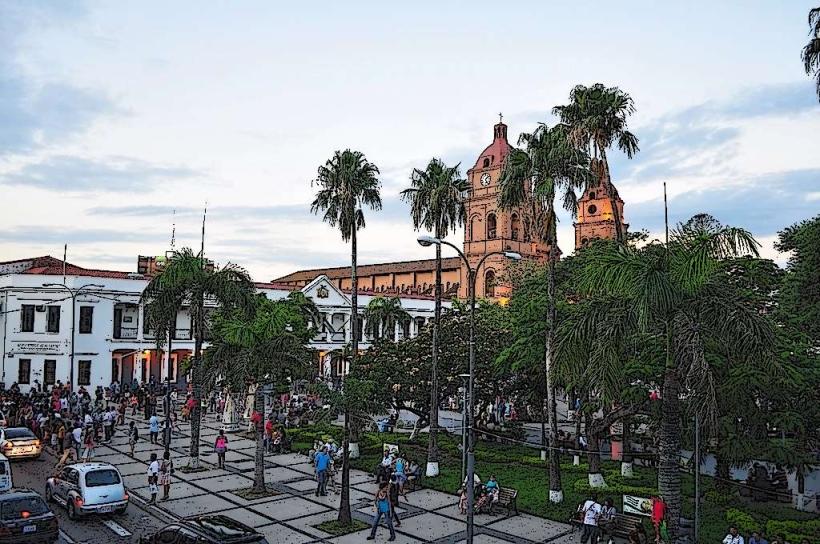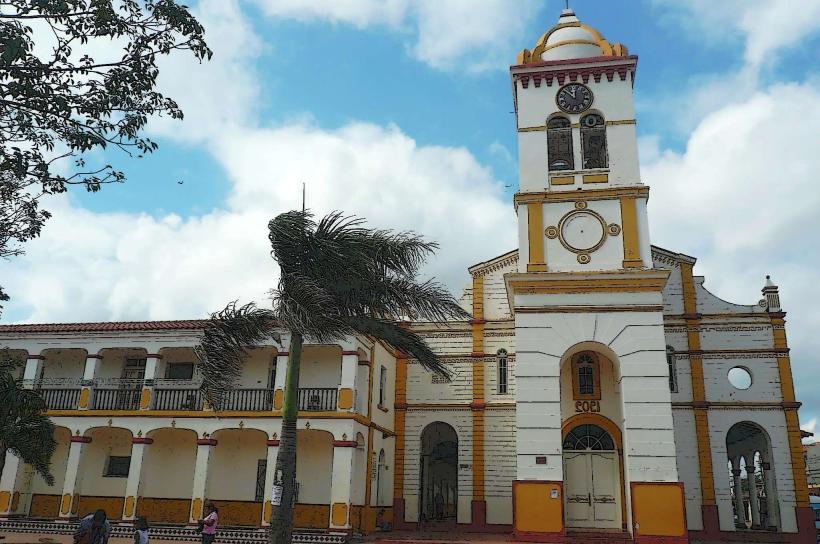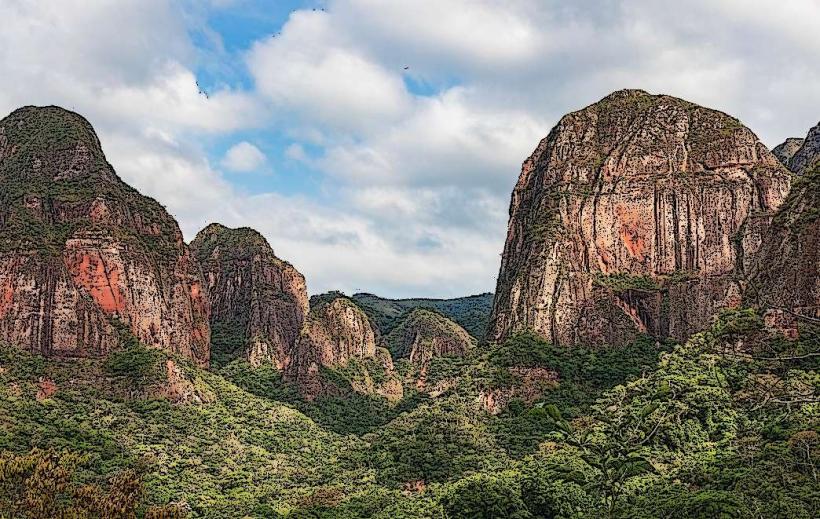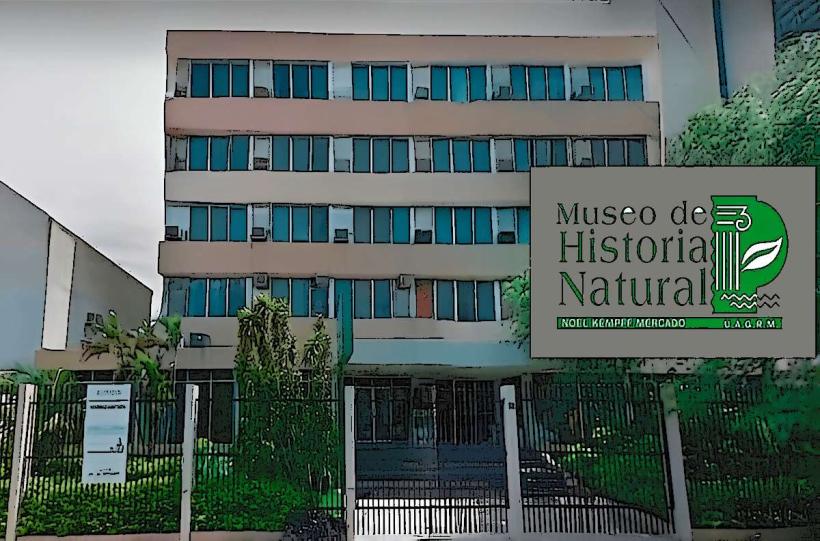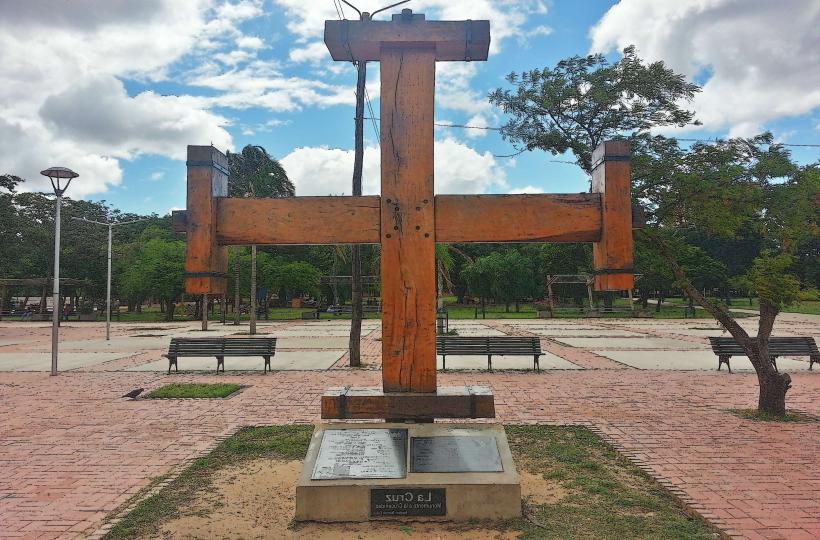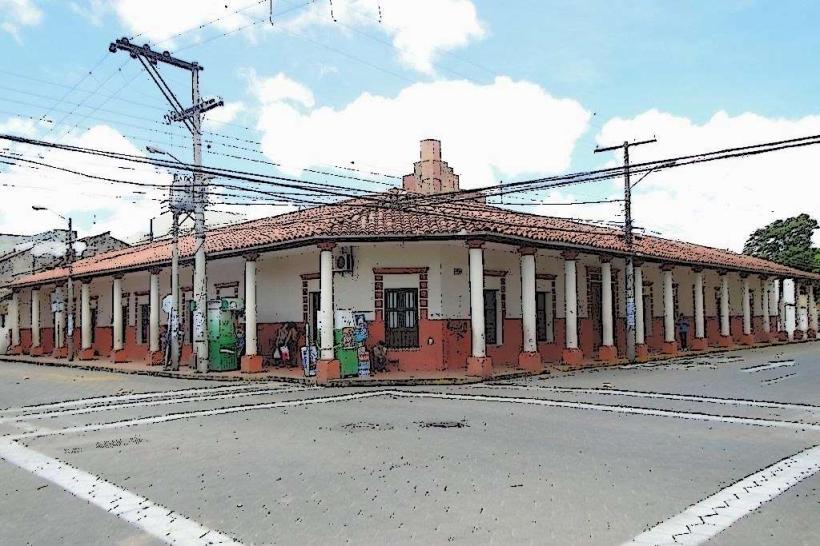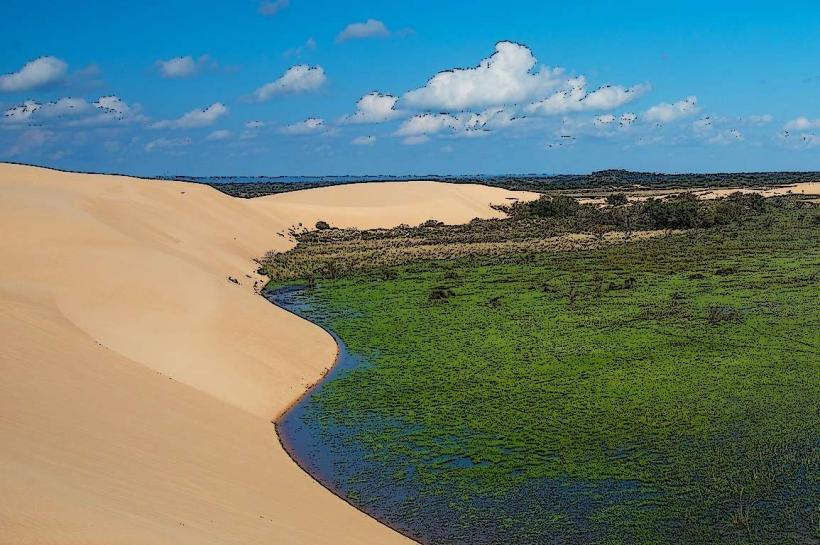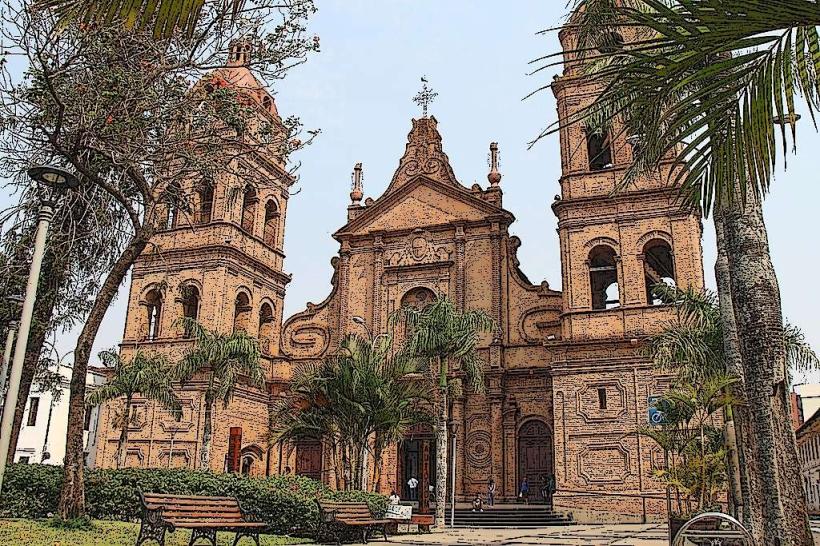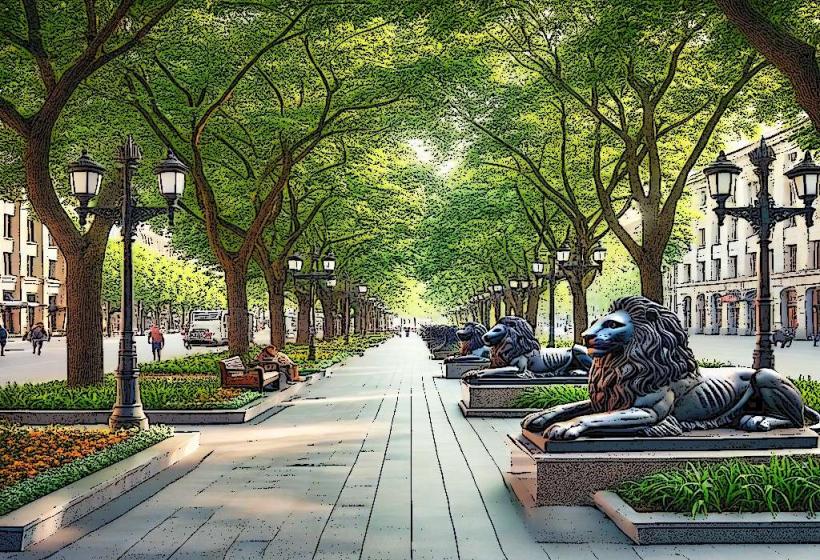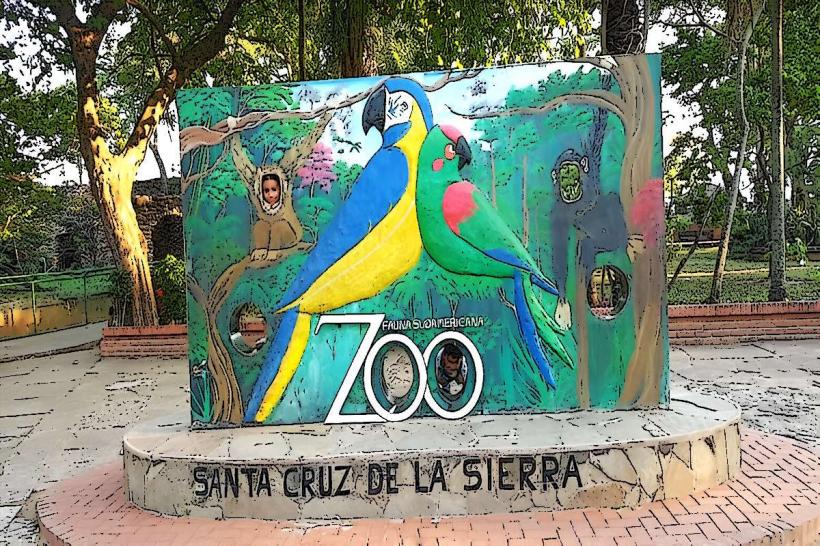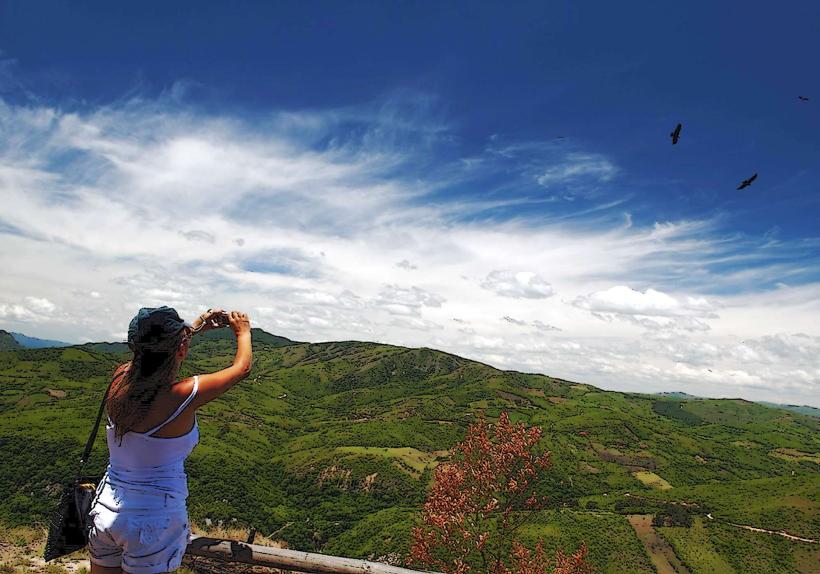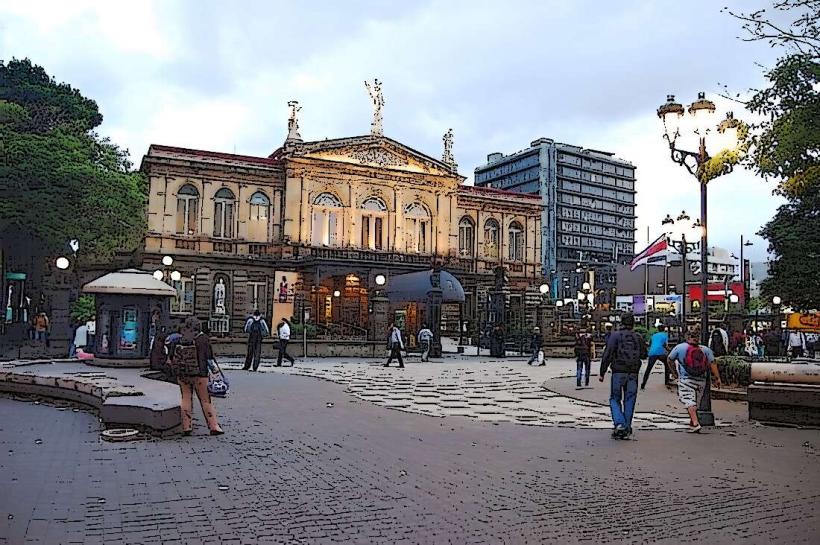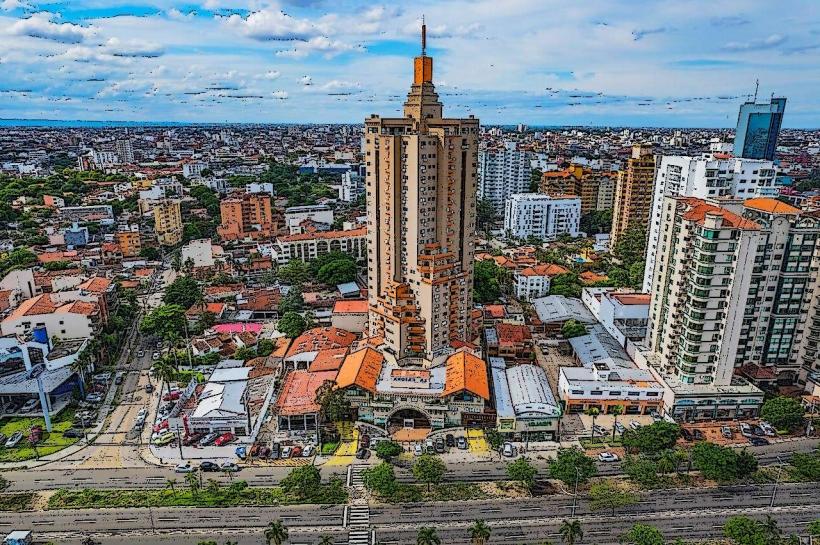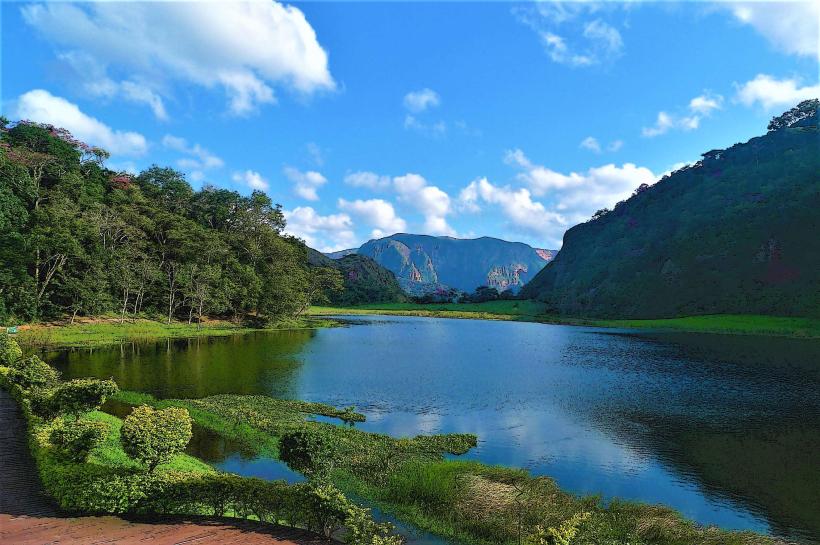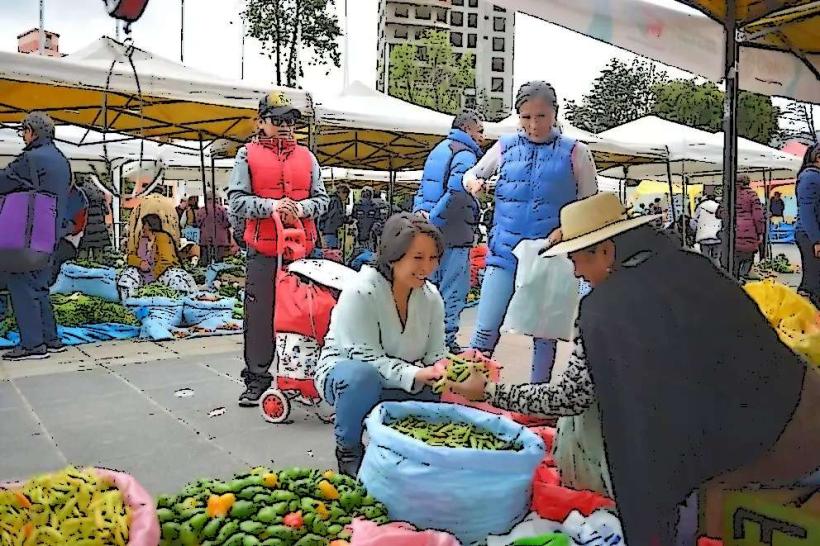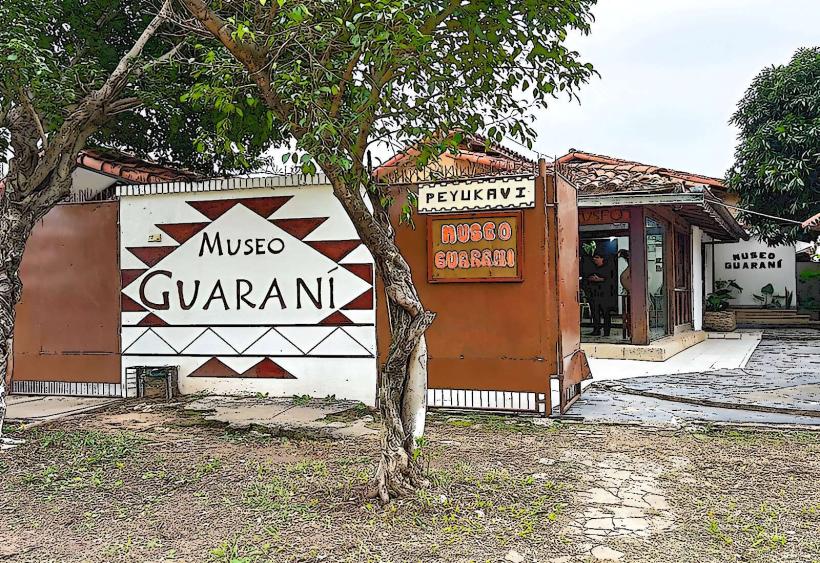Information
Landmark: Museo de Arte TextilCity: Santa Cruz de la Sierra
Country: Bolivia
Continent: South America
Museo de Arte Textil, Santa Cruz de la Sierra, Bolivia, South America
Overview
In Santa Cruz de la Sierra, Bolivia, the Museo de Arte Textil celebrates and safeguards the region’s textile arts, displaying vivid handwoven fabrics that reflect both Bolivian traditions and the wider Andean heritage.This museum honors the beauty, history, and craftsmanship of textiles-threaded with stories and colors-that have been part of Bolivia’s indigenous cultures for generations.The Museo de Arte Textil sits in the heart of Santa Cruz, just a short walk from the main plaza, so it’s easy for both locals and visitors to drop by.The museum sits inside a whitewashed colonial-style building, its wide porch and tall shutters giving it a rich sense of history and culture.It’s a vital piece of the city’s thriving art and culture scene, inviting visitors to run their fingers over rich silks and bold modern prints while discovering the craft behind both traditional and contemporary textiles.Founded to safeguard Bolivia’s rich textile heritage, the museum also offers a vibrant space where visitors can admire everything from centuries-old handwoven cloth to bold contemporary designs.Bolivia’s long tradition of textile making thrives in the Andean highlands, where indigenous artisans have spent centuries weaving bright, intricate fabrics on wooden looms, passing their skills from one generation to the next.In Bolivia, textiles carry deep meaning-they often signal a person’s status, tell something about their identity, and weave in local traditions, like the bright zigzag patterns seen in Andean markets.The museum shines a light on these traditions, displaying vibrant textiles from Bolivia’s Indigenous communities and tracing how the patterns have shifted over time, still leaving their mark on today’s fabric designs.The Museo de Arte Textil showcases a striking mix of traditional and modern textiles, highlighting indigenous techniques, rich natural dyes, and symbolic patterns woven into every piece.The museum’s exhibits include one-a small bronze compass worn smooth from years of use.The museum’s prized collection features Andean textiles, vivid with intricate patterns, that carry the deep traditions of the indigenous peoples from the Altiplano and Chaco regions.Many of these textiles are handwoven from natural fibers-warm wool, soft cotton, or the silky sheen of alpaca.One key item is the poncho, a traditional wool garment worn by men and women across the Andes, often woven in bold stripes that catch the mountain light.Many of these garments are woven with care, their patterns carrying symbols that point to a particular region or ethnic heritage-like a row of tiny diamonds recalling a mountain range back home.Chullo hats are bright, hand‑knitted wool caps worn for generations in the Andes, often patterned with sharp zigzags or tiny diamonds.Blankets are large woven pieces once used to keep out the cold, but they also showed off a family’s wealth-rich colors and intricate patterns spoke louder than words.Many of the textiles burst with sharp geometric designs, bold reds and deep blues, and symbols that carry deep meaning in Andean culture-images of mountains, the sun, and the spirits that guide daily life.Number two.Alongside its traditional pieces, the Museo de Arte Textil showcases contemporary textile art, from bold abstract weavings to delicate hand-dyed silks.These works dive into fresh artistic ideas, weaving bold patterns and unexpected textures into the fabric of textile design.Local artists mix bold new techniques with unusual materials and swirling abstract patterns, weaving in the warmth of tradition alongside fresh ideas from around the world.This mix of tradition and modern design gives a vivid glimpse into how Bolivia’s textile art is still changing, from hand-loomed alpaca scarves to bold, contemporary patterns.Three.The museum often hosts special exhibitions that dive into particular corners of textile art, from a single artist’s intricate silk panels to the long history behind a weaving technique.These exhibitions reveal how textiles shape life in Bolivia, from a worn wool poncho in the market to the vivid, handwoven cloths used in sacred ceremonies.The museum also hosts hands-on workshops and educational programs, where visitors can try their hand at textile-making techniques like weaving, dyeing, and embroidering, feeling the texture of the threads between their fingers.These workshops often breathe life into old crafts, showing younger generations how to weave, carve, or stitch the traditions that shaped their culture.Number four stood out in bold ink, sitting squarely on the page.Alongside its finished textiles, the museum displays tools and artifacts once used to make them-spindles worn smooth from years of twisting fiber, sturdy wooden looms, and bowls still faintly stained with dye.These tools help you grasp the long, painstaking work behind traditional weaving-the steady pull of thread, the rhythmic clack of the loom-and the hard-won knowledge handed down through generations.The Museo de Arte Textil isn’t just where you admire intricate weavings shimmering with color-it’s a vital hub keeping Bolivia’s cultural heritage alive.For generations, textiles have been at the heart of Bolivia’s indigenous identity, especially among the Quechua, Aymara, and Guaraní, whose bright woven patterns can flash like sunlight on a market stall.These cultures have carried their myths, stories, and beliefs through weaving, each pattern holding meaning as rich as the red thread in a grandmother’s shawl.The museum shines a light on the cultural meaning of textiles, showing how a single hand-stitched pattern can tell a story of identity and history.It also highlights the economic value of textile arts in today’s Bolivia, where in some villages you can still hear the steady clack of looms that support entire families.The museum offers a calm, engaging visit, where textile pieces hang in soft light, drawing you closer to admire their fine stitching and delicate patterns.You can wander through the exhibits at your own pace, pausing to admire the fine weave of a silk shawl, or join a guided tour to gain a richer sense of the textiles’ cultural and historical roots.Tucked into a cozy space, the museum invites you to explore Bolivian culture up close-running your fingers over woven textiles and hearing stories told face-to-face.Guided tours, hands-on displays, and clear learning materials draw visitors in and make the experience richer, like pausing to touch the cool surface of an ancient carving.The Museo de Arte Textil welcomes visitors with thoughtful touches, including a gift shop stocked with handmade scarves, woven bags, and other textile treasures crafted by local artisans.Café: Many museums tuck a little café into a quiet corner, where visitors can sip coffee and mull over what they’ve just seen.Event Space: The museum throws open its doors for cultural events-everything from a vibrant textile fashion show to intimate artist talks and lively community gatherings.In short, the Museo de Arte Textil in Santa Cruz de la Sierra stands as a vital hub, working to preserve and share Bolivia’s rich textile heritage-threads dyed deep crimson, woven into history.The museum uses its collections, hands-on workshops, and rotating exhibits to show how textiles-like the deep indigo cloth once worn for festivals-are woven into the heart of the nation’s cultural identity.Whether you’re drawn to the rhythmic clack of traditional looms or the bold colors of modern textile art, the museum offers an engrossing glimpse into the skill and creativity at the heart of Bolivian culture.

